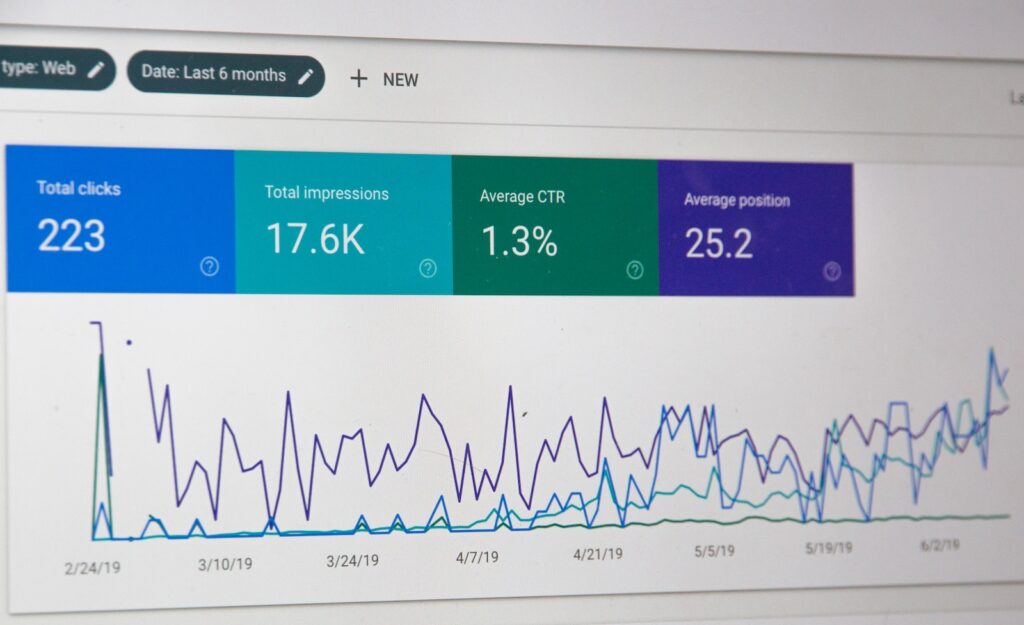Passive income has become a buzzword in recent years, and for good reason. The idea of making money while you sleep is incredibly appealing, especially in a world where traditional jobs often require long hours and can be mentally and physically draining. Passive income offers a way to break free from the constraints of the nine-to-five grind and create a life of financial freedom and flexibility.
But what exactly is passive income? In simple terms, it’s money that you earn with little to no effort on your part. It’s the opposite of active income, where you exchange your time and skills for a paycheck. With passive income, you do the work upfront and then sit back and watch the money roll in.
There are many different ways to earn passive income, and in this blog post, we will explore six legitimate methods that anyone can use to start generating passive income. Whether you’re a student looking to make some extra cash, a stay-at-home parent wanting to contribute to the household income, or someone looking to diversify their income streams, these methods can work for you.
The first method we will discuss is investing in real estate. Real estate has long been a popular choice for those seeking passive income because it offers a reliable and tangible asset that can appreciate over time. Whether you choose to invest in residential properties, commercial properties, or even real estate investment trusts (REITs), there are plenty of opportunities to generate passive income in the real estate market.
Another method that has gained popularity in recent years is affiliate marketing. This involves promoting other people’s products or services and earning a commission for every sale or lead that you generate. With the rise of e-commerce and online shopping, affiliate marketing has become a lucrative way to earn passive income. By partnering with companies that have affiliate programs, you can earn money while you sleep by simply promoting their products or services to your audience.
Creating and selling digital products is another great way to earn passive income. Whether you’re an artist, a writer, or a photographer, there are countless opportunities to create and sell digital products such as e-books, online courses, stock photos, and more. Once you’ve created the product, you can sell it online and earn money every time someone makes a purchase.
One method that requires a bit more upfront effort but can lead to significant passive income is building an online business. Whether you choose to start a blog, an e-commerce store, or a software-as-a-service (SaaS) business, building an online business allows you to leverage the power of the internet to reach a global audience and generate passive income. With the right strategy and execution, an online business can provide you with a steady stream of income for years to come.
Investing in dividend stocks is another method that can help you earn passive income. Dividend stocks are shares of companies that distribute a portion of their profits to shareholders on a regular basis. By investing in dividend stocks, you can earn passive income in the form of regular dividend payments. Over time, as you reinvest your dividends and the value of the stocks appreciates, your passive income can grow significantly.
The final method we will discuss is peer-to-peer lending. This involves lending money to individuals or small businesses through online platforms that connect borrowers with lenders. By lending money to others, you can earn interest on your investment and generate passive income. While there is some risk involved with peer-to-peer lending, it can be a lucrative way to earn passive income if done correctly.
In conclusion, passive income offers a way to break free from the constraints of traditional jobs and create a life of financial freedom and flexibility. Whether you choose to invest in real estate, engage in affiliate marketing, create and sell digital products, build an online business, invest in dividend stocks, or participate in peer-to-peer lending, there are plenty of legitimate ways to earn passive income. By taking the time and effort to set up these income streams, you can enjoy the benefits of passive income for years to come.
1. Rental Properties
Investing in rental properties is a tried and true method of earning passive income. By purchasing a property and renting it out to tenants, you can generate a consistent stream of monthly rent payments. While being a landlord requires some initial investment and ongoing management, the potential returns can be substantial.
Before diving into the world of rental properties, it’s essential to do your research. Location, property type, and market demand are crucial factors to consider. Additionally, you’ll need to familiarize yourself with landlord-tenant laws and regulations in your area to ensure a smooth and legal rental process.
One of the first steps in investing in rental properties is to determine your investment goals. Are you looking for a long-term investment to generate a steady income, or are you aiming for short-term gains through property appreciation? Understanding your goals will help you narrow down your options and make informed decisions.
Next, you’ll need to consider the location of the rental property. The location plays a significant role in determining the demand and potential rental income. Look for areas with a high demand for rentals, such as proximity to universities, business districts, or popular tourist destinations. Research the local rental market to understand the average rental prices and vacancy rates in the area.
Once you’ve identified a potential location, you can start exploring different property types. There are various options available, including single-family homes, multi-unit buildings, condos, or even commercial properties. Each type of property has its pros and cons, so it’s important to consider factors such as maintenance costs, potential rental income, and target tenant market.
Before making a purchase, it’s crucial to conduct a thorough inspection of the property. Hire a professional inspector to assess the condition of the property, including the structure, plumbing, electrical systems, and any potential maintenance or repair issues. This will help you identify any hidden costs and make an informed decision.
Once you’ve acquired a rental property, you’ll need to find suitable tenants. Advertising the property through various channels, such as online listings, local newspapers, or word of mouth, can help attract potential tenants. Screen the applicants carefully, checking their rental history, credit score, and employment status to ensure they are reliable and capable of paying the rent on time.
As a landlord, it’s important to familiarize yourself with the legal obligations and responsibilities. Understand the local landlord-tenant laws, including eviction procedures, security deposit regulations, and maintenance responsibilities. Maintaining a good relationship with your tenants and addressing any issues promptly can help create a positive rental experience for both parties.
In conclusion, investing in rental properties can be a lucrative venture, providing a steady stream of passive income. However, it requires careful planning, research, and ongoing management. By understanding your investment goals, choosing the right location and property type, conducting thorough inspections, and following legal obligations, you can maximize the potential returns and create a successful rental property portfolio.
2. Dividend Stocks
Dividend stocks are shares of companies that distribute a portion of their profits to shareholders on a regular basis. By investing in dividend stocks, you can earn passive income through these regular dividend payments. This method is ideal for individuals interested in the stock market but looking for a more stable and predictable return on their investment.
When selecting dividend stocks, it’s important to consider factors such as the company’s financial health, dividend history, and overall market conditions. Diversifying your portfolio with a mix of dividend stocks across different industries can help mitigate risk and maximize your passive income potential.
One key advantage of dividend stocks is their ability to provide a consistent stream of income, even during market downturns. Since companies that pay dividends are typically more established and profitable, they tend to be more resilient during economic downturns. This means that even if the stock price experiences a temporary decline, you can still rely on the regular dividend payments to generate income.
Another benefit of investing in dividend stocks is the potential for dividend growth over time. Some companies have a track record of increasing their dividend payments year after year, which can result in a higher yield on your initial investment. This can be particularly advantageous for long-term investors who are looking to build wealth and generate a reliable income stream for retirement.
Furthermore, dividend stocks offer the opportunity for capital appreciation in addition to the regular dividend payments. As the company’s profits grow and its stock price increases, the value of your investment can also appreciate. This dual benefit of income and potential capital gains makes dividend stocks an attractive option for investors seeking both current income and long-term growth.
However, it’s important to note that not all dividend stocks are created equal. Some companies may have unsustainable dividend payout ratios or may be facing financial challenges that could jeopardize their ability to continue paying dividends. Therefore, it’s crucial to conduct thorough research and analysis before investing in any dividend stock.
In conclusion, dividend stocks can be a valuable addition to an investment portfolio for those seeking a stable and predictable income stream. By carefully selecting dividend stocks from financially healthy companies and diversifying across different industries, investors can benefit from regular dividend payments, potential dividend growth, and the opportunity for capital appreciation.
3. Peer-to-Peer Lending
Peer-to-peer lending platforms have gained popularity in recent years as an alternative investment option. These platforms connect borrowers with individual lenders, cutting out the traditional banking system. By lending money to individuals or small businesses, you can earn interest on your investment.
When participating in peer-to-peer lending, it’s crucial to assess the risk associated with each borrower. Platforms typically provide information about borrowers’ creditworthiness and past repayment history to help you make informed decisions. Diversifying your lending across multiple borrowers can help minimize the impact of any defaults.
One of the advantages of peer-to-peer lending is the ability to choose the borrowers you want to lend to. Most platforms have a screening process in place that evaluates the creditworthiness of potential borrowers. This allows you to review their financial history, credit score, and other relevant information before deciding whether or not to fund their loan request.
Additionally, peer-to-peer lending platforms often provide tools and resources to help you diversify your lending portfolio. These tools can help you spread your investment across different types of loans, such as personal loans, business loans, or even real estate loans. By diversifying, you can reduce the risk of losing your entire investment if one borrower defaults on their loan.
Another advantage of peer-to-peer lending is the potential for higher returns compared to traditional investment options. Since you are lending directly to individuals or small businesses, you can negotiate the interest rate and terms of the loan. This flexibility allows you to earn a higher return on your investment compared to traditional savings accounts or bonds.
However, it’s important to note that peer-to-peer lending also carries some risks. The biggest risk is the possibility of borrowers defaulting on their loans. While platforms do their best to assess borrowers’ creditworthiness, there is still a chance that some borrowers may not be able to repay their loans. In such cases, you may lose a portion or all of your investment.
Furthermore, the peer-to-peer lending market is relatively new and still evolving. As with any investment, there is always a level of uncertainty and risk involved. It’s important to carefully research and understand the platform you choose to invest with, as well as the borrowers you decide to lend to.
In conclusion, peer-to-peer lending offers an alternative investment option that allows individuals to earn interest on their money by lending it directly to borrowers. While there are risks involved, with proper due diligence and diversification, peer-to-peer lending can be a lucrative investment strategy.
When creating and selling online courses, it’s crucial to take a strategic approach to maximize your earning potential. Start by conducting market research to identify a topic that has a high demand but is not already saturated with similar courses. This will ensure that you have a unique selling proposition and can stand out in the crowded online education space.
Once you have chosen a topic, it’s time to create your course content. Invest time and effort into developing high-quality materials that are engaging and informative. Consider using a variety of multimedia elements such as videos, quizzes, and interactive exercises to enhance the learning experience for your students.
In addition to creating compelling content, it’s essential to market your course effectively. Leverage the power of social media platforms like Facebook, Instagram, and LinkedIn to reach your target audience. Create engaging posts and share valuable insights related to your course topic to attract potential students. You can also collaborate with influencers or industry experts to promote your course and tap into their existing audience.
Building a positive reputation is crucial when it comes to selling online courses. Engage with your students by providing prompt and helpful responses to their questions and feedback. Encourage them to leave reviews and testimonials that highlight the value they gained from your course. Positive reviews and testimonials can significantly impact your course’s credibility and attract more students.
Another way to generate ongoing income from your online course is to offer additional resources or bonuses to students who have completed it. This can include exclusive access to webinars, e-books, or one-on-one coaching sessions. By providing added value, you can increase customer satisfaction and encourage repeat purchases.
Lastly, don’t forget to regularly update and improve your course content. Technology and industry trends are constantly evolving, so it’s important to stay up-to-date and provide the most relevant information to your students. By continuously improving your course, you can attract repeat customers and generate ongoing income.
In conclusion, creating and selling online courses can be a profitable venture if approached strategically. By choosing a topic with demand, creating high-quality content, effectively marketing your course, building a positive reputation, offering additional resources, and continuously improving your course, you can maximize your earning potential and establish yourself as an authority in your field.
5. Affiliate Marketing
Affiliate marketing involves promoting other people’s products or services and earning a commission for every sale or lead generated through your unique affiliate link. This method is popular among bloggers, influencers, and website owners who have a significant online following.
To succeed in affiliate marketing, it’s important to choose products or services that align with your niche and audience. Authenticity and transparency are key to building trust with your audience, so only promote products or services that you genuinely believe in. Additionally, regularly tracking your affiliate links’ performance and optimizing your marketing strategies can help maximize your passive income potential.
One of the main advantages of affiliate marketing is the flexibility it offers. As an affiliate marketer, you have the freedom to choose which products or services to promote. This means that you can select items that you are passionate about or have personal experience with, making it easier to create engaging content and connect with your audience.
Furthermore, affiliate marketing allows you to tap into the power of social media and other online platforms. With the rise of social media influencers, many companies are now partnering with individuals who have a large following to promote their products. This opens up a world of opportunities for affiliate marketers, as they can leverage their online presence to reach a wider audience and increase their chances of earning commissions.
In addition to social media, affiliate marketers can also utilize other digital marketing channels such as email marketing, content marketing, and search engine optimization (SEO) to drive traffic to their affiliate links. By employing these strategies effectively, you can increase your visibility and attract more potential customers, ultimately boosting your chances of earning passive income.
Another advantage of affiliate marketing is the low startup cost. Unlike starting your own business, where you may need to invest in inventory, equipment, or office space, affiliate marketing allows you to get started with minimal financial investment. All you need is a website or a platform where you can share your affiliate links, and you’re ready to start promoting products and earning commissions.
However, it’s important to note that affiliate marketing requires dedication and hard work. While it may seem like an easy way to make money online, building a successful affiliate marketing business takes time and effort. You need to consistently create high-quality content, engage with your audience, and stay up-to-date with the latest industry trends to stay competitive.
In conclusion, affiliate marketing is a popular and effective way to generate passive income. By selecting the right products or services, leveraging your online presence, and employing various digital marketing strategies, you can increase your chances of success in this field. Remember, building trust with your audience and providing value should always be your top priority as an affiliate marketer.
6. Create and Sell Digital Products
If you have a creative side, creating and selling digital products can be a profitable passive income stream. Digital products can include e-books, templates, stock photos, graphics, or even software. Once the product is created, you can sell it repeatedly without incurring any additional production costs.
When creating digital products, consider your target audience’s needs and preferences. Conduct market research to identify potential gaps or opportunities. Providing high-quality and valuable products can help establish your brand and attract repeat customers. Additionally, leveraging platforms like Etsy or your own website can help reach a wider audience and increase your sales.
One popular digital product that has gained significant popularity in recent years is online courses. With the rise of e-learning platforms, creating and selling online courses has become a lucrative opportunity for individuals with expertise in various fields. Whether you are an expert in photography, marketing, coding, or any other subject, you can create comprehensive online courses that provide value to your target audience.
When creating an online course, it is important to structure the content in a logical and engaging manner. Break down the information into easily digestible modules and include interactive elements such as quizzes or assignments to keep the learners engaged. Additionally, consider offering supplementary materials like downloadable resources or access to a private community for further support and engagement.
To market your online course effectively, utilize various digital marketing strategies such as social media advertising, email marketing, and content marketing. By creating compelling content that showcases the value of your course and targeting the right audience, you can attract a steady stream of students and generate passive income.
Another digital product that has gained popularity is mobile apps. With the increasing use of smartphones, there is a high demand for innovative and useful mobile applications. If you have programming skills or can hire a developer, you can create and sell mobile apps on platforms like the App Store or Google Play Store.
When developing a mobile app, it is crucial to conduct market research to identify the needs and preferences of your target audience. This will help you create an app that solves a specific problem or provides a unique experience. Additionally, ensure that your app has an intuitive user interface, is bug-free, and offers regular updates to maintain user satisfaction.
Once your app is ready, focus on marketing and promotion to increase its visibility and downloads. Utilize app store optimization techniques, such as optimizing your app’s title, description, and keywords, to improve its search rankings. Additionally, consider running targeted advertising campaigns or collaborating with influencers to reach a wider audience.
Creating and selling digital products can be a fulfilling and profitable venture. With the right strategy, market research, and marketing efforts, you can establish a passive income stream that continues to generate revenue even when you’re not actively working on it. So, unleash your creativity, identify the needs of your target audience, and start creating digital products that can bring you long-term success.





